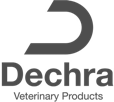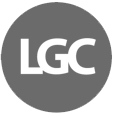
Temperature mapping is an important process to ensure you are operating safely and according to government legislation. At Wessex Power, our reliable and effective warehouse temperature mapping services ensure that you maintain upmost safety and precision, no matter what industry you operate in.
What is warehouse temperature mapping?
Warehouse temperature mapping involves monitoring and analysing temperature and humidity across a wide range of areas within a warehouse, allowing you to take action on areas that are too hot or cold whilst upholding legal regulations. Warehouse temperature monitoring ensures that your facility is working at safe temperatures and minimising heat loss.
So you know exactly what to expect with warehouse temperature mapping with Wessex Power, we have broken down the process into 8 easy steps.
Step 1: Create a Validation Plan
Firstly, we will create a validation plan with you to ensure the warehouse temperature mapping process is fully prepared for and can be monitored at each stage. This also acts as the master document for upholding Good Manufacturing Practice (GMP) standards. In the validation plan for warehouse temperature mapping, we will include:
- Staff Roles
- Validation Processes
- Required equipment, i.e. warehouse temperature monitoring devices such as data loggers and receivers
- A detailed validation schedule, i.e. how often you will log temperature data
- A response plan to ensure full preparation if temperature thresholds are breached
- Protocol document for when conditions change or events occur that result in the need for re-validation.
Step 2: Identify Areas of Risk & Determine Monitoring Areas
When undertaking warehouse temperature and humidity monitoring, it is important to identify any potential risk areas to ensure that desired temperatures are maintained. For example, larger warehouses pose the risk of greater temperature variation, whereas smaller warehouses can heat up at an increased rate. Also, it is important to note areas that might create warm or cold pockets of air, such as windows or air conditioners.
We understand that heat rises and cold air falls, therefore we install warehouse temperature monitoring devices at both the highest and lowest points to ensure even temperature mapping.
Step 3: Create a Detailed Warehouse Temperature Monitoring Protocol
A detailed warehouse temperature mapping protocol document breaks down the specific details needed for us to get the process going, such as:
- The parameters you need to measure, i.e. temperature & humidity
- The number of data loggers needed for each parameter
- How often you require readings
- How long the warehouse temperature mapping study will run for
- The acceptable range of variation in each parameter
This will then be transferred to a diagram which highlights where the data loggers will be deployed.
Step 4: Selecting Appropriate Equipment
When you choose Wessex Power, you can expect precise and reliable data with our warehouse temperature monitoring devices.
Our data loggers have:
- High accuracy
- A configurable reading rate
- A fast response time
- Threshold alarms
- Text notifications
- Free Windows and Cloud Based software
We can recommend the very best data loggers required for warehouse temperature mapping to suit your facility, where our team are always happy to help.
Step 5: Deploy Data Loggers
After the diagram has been outlined in the protocol, it is time to deploy the data loggers. We will divide up your warehouse into several sections and zones, making it easier and more precise during the temperature mapping process. We will then place data loggers at several heights in these zones, ensuring that our warehouse temperature mapping devices are collecting accurate data within each area of your warehouse.
Step 6: Conduct Warehouse Temperature Mapping Study & Review Results
Now the preparation has been carried out effectively, at this point we will start the temperature mapping process. Through this, we will collect a number of details to create an accurate and complete report of the study, such as:
- Date and time of the study
- Last calibration and next calibration date
- Reading interval
- Minimum, maximum and average temperature reading statistics
- Time stamps for each reading
We will also provide the results of the warehouse temperature mapping study in a detailed graph, as well as any notes that you need to be aware of.
Step 7: Make Modifications as Necessary
If temperature thresholds are breached during the warehouse temperature mapping study, we will provide you with full guidance and support regarding how to put effective modifications into place.
Some common adjustments following a temperature mapping study are:
- Moving racks that are too close to risk factors
- Adjusting HVAC systems, e.g. air conditioning, or vent locations
- Installing fans to increase ventilation in particular areas
- Rearranging shelves to prevent obstruction to airflow
If any necessary modifications need to be made, these must be documented in the protocol document for future reference.
Step 8: Implement a Regular Temperature Mapping Schedule
After the study is complete and any modifications have been implemented, we will then organise a regular temperature mapping validation schedule to ensure you consistently comply with government regulations. Through this, we can regularly monitor for any necessary modifications and make sure that you continue to operate safely and professional within your warehouse facility.
On our Loggershop website, we stock a variety of complete temperature mapping packs to help your warehouse stay government compliant. If you require any further assistance or to find out more about our warehouse temperature mapping services, call our friendly team on 01929 459459 or email sales@WPLS.co.uk. Alternatively, fill out our general enquiry form.














